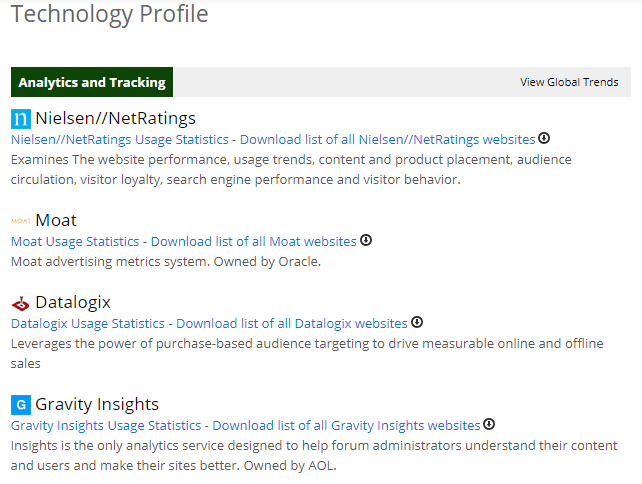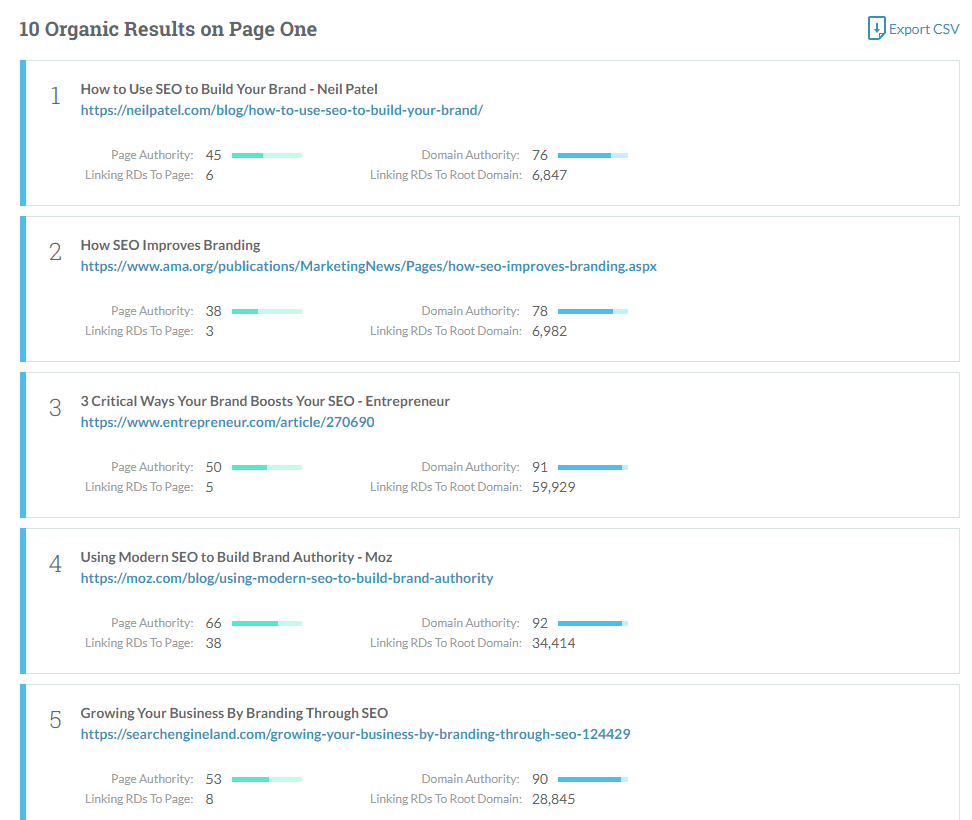Over 60 percent of companies are looking to increase their SEO strength and organic presence in the coming year.
I know what you’re thinking: pitching SEO is going to be like shooting fish in a barrel.
But not so fast.
There are too many SEO agencies out there competing for the same clients.
Every single day, C-suite execs are getting pitches from new SEO agencies.
And using the same old tactics is a surefire way to lose sales.
Add that to the fact that C-suite executives are vastly different animals than a standard, lower level client or gatekeeper.
They have years, if not decades, of experience under their belts. You can’t flash a case study and expect to seal the deal.
Here’s why C-suite execs aren’t buying your SEO pitch.
1. Your Plan is Cookie-Cutter & Ignores the Big Picture
SEO professionals often get caught up in quick wins. We want to get the job done fast. And clients love to hear it.
They love to hear that your patented on-page optimization is going to boost rankings, relevance, and page authority.
Heck, existing clients are probably emailing you daily about these exact things.
But for big clients and seasoned veterans like a CMO, that doesn’t move the needle. Tweaking a few keywords and metadata ain’t gonna do it.
They can do that in their spare time or put their assistant on it.
And little SEO hacks won’t cut it, either.
You have to focus on real company sh!t (RCS), as coined by Wil Reynolds.
Things that make an impact on your potential client’s company beyond just creating content for content’s sake or tricking Google into boosting your rankings.
Reynolds describes RCS as producing “something for a client that’s got a chance to be the best answer on the web.”
It’s content for the purpose of business development, not SEO.
If you’re putting out content that you only created for SEO, you’ve already started off on the wrong foot.
It’s not about stuffing keywords in ALT tags and exchanging links.
Instead, it’s valuable content that moves the brand forward without using risky, one-off tactics.
For example, take a look at Drift’s year without forms article.
That’s RCS. Content that involves real experiments, putting their own business on the line to produce content that changes the way our industry thinks about specific tactics.
By removing forms from their website and focusing on just live chat to qualify leads, they jeopardized their own brand name, potentially risking a massive flop and proving that their own product wasn’t effective.
Or Buffer’s Facebook posting strategy that led to 3x reach and engagements by posting less – something that’s counterintuitive to their own product’s value proposition.
And WordStream’s yearly AdWords benchmark reports or HubSpot’s State of Inbound.
That’s real content that seeks to change the status quo instead of checking off SEO boxes.
Content that adds tremendous value to users and the client’s business.
You should always be brainstorming ideas for every client that will first and foremost create lasting brand impacts. And that will naturally hit SEO requirements.
If your pitch and plan are cookie-cutter in 2018, executives will show you the door.
Memorable brand content is everything in today’s SEO landscape.
2. You Focus Too Much on Vanity Metrics Instead of Their Bottom Line
When pitching to C-suite executives, you can’t give them the same spiel that you give lower level, standard agency clients.
C-suite executives know the ins-and-outs of SEO, and they’ve heard the speech a million times before.
Talks about cost per click (CPC) and outranking your competitors don’t mean anything to a C-suite executive.
Why?
Because they only care about one thing: Profit. Revenue. Cold, hard cash.
Proving that the work being done is actually impacting the company in a positive way.
They know that metrics like bounce rate, impressions, and CPC don’t really matter when it comes to profit.
When doing the math on production vs. organic traffic, you could be paying $100 per click and still be profitable if a single sale nets you $5,000.
The only metrics that C-suite execs want to see are lifetime value (LTV) and cost per acquisition (CPA).
Why? Because then they can gauge how much they can spend on acquisition and big campaigns.
If your lifetime value is extremely high and customer retention is on-point, who cares what your CPC is. That’s child’s play.
If the average customer spends $10,000 with your client over each quarter, spending $2,000 to acquire them is nothing.
And now that you’ve built up lifetime values, CPC and other vanity metrics make no difference.
Who cares if your bounce rate is 75 percent if lowering it to 60 percent wouldn’t directly impact revenue?
These vanity metric approaches don’t mean or do anything.
Your main goals and targets should focus on specific end results like increased revenue and higher lifetime values.
Setting sub-goals, you can dive into the specific inputs needed to achieve them.
For example:
- Main goal: Increase revenue by 10 percent this quarter.
- Sub-goal (how you’ll achieve the main goal): Increase account sign-ups.
- Input required: Increase rate of conversion from trial to paid plans.
- Sub-inputs required: *Where your custom plan comes into the mix.
Breaking down the steps and inputs required to achieve specific outputs is the only way to appeal to executives.
Focusing on increasing vanity metrics does nothing for them unless they directly correlate to increases in revenue.
You have to start by making revenue your only goal. Only then can you put stock into other metrics.
3. You Aren’t Giving Them Personalized, Actionable Insights That Highlight Your Expertise
When getting pitched anything, all that any potential customer wants to hear is what’s in it for them.
What benefits can you give them that they aren’t currently getting?
And therein lies the problem with pitching SEO.
When it comes to SEO, it’s impossible to tell someone “you’ll rank for XX keyword in XX months.”
Yeah, we’ve all had that client.
You simply don’t know, and algorithm updates come daily.
But you can’t sit there and tell executives about your plans to create content and do keyword research.
It’s generic and lacks any form of personalization or effort.
They’ve heard it over and over and over again.
If you can recycle your exact presentation for any company, you’re doing it wrong.
Anyone can create content and use a keyword tool.
That doesn’t mean they’re going to pay you thousands of dollars a month for it.
What differentiating strategy do you have? What research have you done that others haven’t?
More importantly, what specific steps have you outlined that lead to end results?
Instead of generic plans to create content for keywords, try running a site audit and doing extensive background research on each client you’re pitching.
Use BuiltWith to analyze which software they use and (more importantly) which they don’t.

Are there any specific software that you use and they don’t? Ones that worked for other clients that you can prove the effectiveness of with a case study?
Use those as potential pain points. Turn them into a strategy.
For example, if you find out that they don’t use heat mapping, leverage that in your pitch. Show them how they’ll need it to uncover bottlenecks that are impacting the UX.
Now that’s personalization. That’s real effort. Not just saying “We’ll get you XX content pieces a month and hit those keyword targets.”
Audit their existing content based on current standards, too.
Is the content valuable? If it isn’t, compile a list of each of their content links, the current word count, what’s needed, and specific topic suggestions for adding length and value:

These are actionable, personalized suggestions based on their current standing.
Research every link and see what positions they occupy on the SERPs, too:

See how their content compares to the competition.
- Do they need to cover more topics?
- How many links did they get?
- How did they get those links and, more importantly, how can you?
If you aren’t breaking down their current strategy on your own before they hire you, you don’t want it bad enough.
C-suite executives don’t have time for generic pitches that apply to anyone looking for SEO.
Any Joe Schmoe can whip up a boring presentation with SEO talking points like links, content, and optimization.
But the ones who get hired add depth to those talking points, turning them into actionable plans that provide value and showcase expertise.
4. Brand Building Isn’t in Your Repertoire
When it comes to pitching SEO, brand name matters.
Just like with any major purchase, you likely know the brand you’re buying from.
And brand bias is still real. It influences purchase behavior.
Not only is your own company branding important, but being able to develop a brand for your client is just as (if not more) important.
Don’t believe me?
A study done by SurveyMonkey and Search Engine Land found that the most important factor “in helping you decide which results to click on in a search engine” was “Known retailer.”
Simply put: brand recognition drives clicks.
And executives understand this.
That’s why those crappy, outdated CTR graphs you show won’t compel them.
Ranking first is pointless if nobody knows your brand because the first thing people look for is branding.
No matter how much headline tweaking you do to hopefully boost CTR and rankings, people aren’t even reading it (first).
Do you really think that a no-name small business will drive more clicks than HubSpot just because it’s one result ahead on a given SERP?
Absolutely not.
Branding and recognition signal trust. And when it comes to searchers looking for advice, they expect proven tactics from a proven brand.
If you ever have any hope of getting your client to rank for big keywords, you’re going to have to focus on brand building and raising their domain authority.
Otherwise, your client is a minnow in a sea of sharks.
Most big, potentially game-changing keywords are dominated by big brands.
If branding isn’t “your thing,” think again.
Focus on branding yourself and developing a branding plan for each client you pitch to.
It’s the only way to compete in organic search today.
Conclusion
With more companies looking to boost their SEO and organic presence, you might think that SEO pitching is easy.
But if landing big, executive-level clients is your top priority (and it should be), you might notice yourself falling short.
The same old cookie-cutter slides don’t work for veteran marketers leading big businesses.
You have to carefully craft your pitch around real company sh*t.
Focus on revenue instead of vanity metrics and dive into what specific inputs net desired outputs.
Give them a personalized experience that showcases direct value-adding and your own company expertise.
Build a brand for both yourself and the client that allows them to achieve their goals.
Only then will you make lasting impacts that help your business thrive in such a competitive space.
More SEO Career Resources:
- 11 Ways to Prove the Value of SEO to Your Boss
- 5 Ways to Better Communicate Your SEO Work
- Selling SEO Services: 72 Things You Need to Know
Image Credits
Screenshots taken by Brad Smith, March 2018




